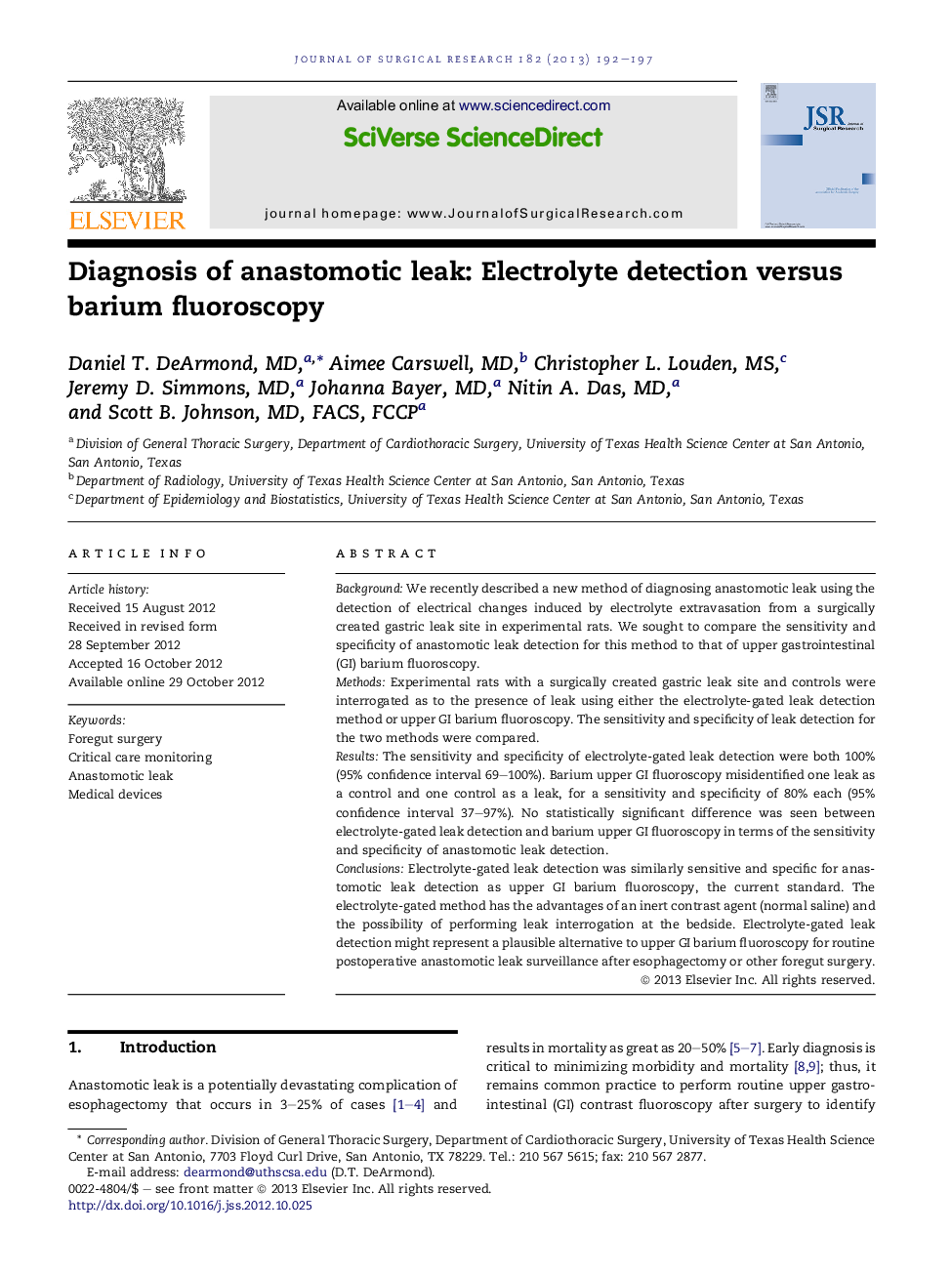| Article ID | Journal | Published Year | Pages | File Type |
|---|---|---|---|---|
| 4301008 | Journal of Surgical Research | 2013 | 6 Pages |
BackgroundWe recently described a new method of diagnosing anastomotic leak using the detection of electrical changes induced by electrolyte extravasation from a surgically created gastric leak site in experimental rats. We sought to compare the sensitivity and specificity of anastomotic leak detection for this method to that of upper gastrointestinal (GI) barium fluoroscopy.MethodsExperimental rats with a surgically created gastric leak site and controls were interrogated as to the presence of leak using either the electrolyte-gated leak detection method or upper GI barium fluoroscopy. The sensitivity and specificity of leak detection for the two methods were compared.ResultsThe sensitivity and specificity of electrolyte-gated leak detection were both 100% (95% confidence interval 69–100%). Barium upper GI fluoroscopy misidentified one leak as a control and one control as a leak, for a sensitivity and specificity of 80% each (95% confidence interval 37–97%). No statistically significant difference was seen between electrolyte-gated leak detection and barium upper GI fluoroscopy in terms of the sensitivity and specificity of anastomotic leak detection.ConclusionsElectrolyte-gated leak detection was similarly sensitive and specific for anastomotic leak detection as upper GI barium fluoroscopy, the current standard. The electrolyte-gated method has the advantages of an inert contrast agent (normal saline) and the possibility of performing leak interrogation at the bedside. Electrolyte-gated leak detection might represent a plausible alternative to upper GI barium fluoroscopy for routine postoperative anastomotic leak surveillance after esophagectomy or other foregut surgery.
